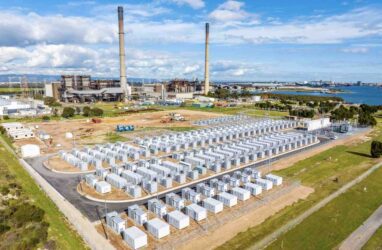Feed aggregator
COP29: US DOE deputy chief ‘confident’ rulemaking on certain IRA tax credits will finish before Trump
CN Markets: CEA price remains stable, weekly trading volume jumps
California limits on ‘forever chemicals’ PFAS in products are effective, study says
Levels in people’s blood for 37 chemicals linked to health issues declined after they were designated under Prop 65
California’s nation-leading restrictions on toxic chemicals in consumer products reduced the population’s body levels for many dangerous compounds linked to cancer, birth defects, reproductive harm and other serious health issues.
New peer-reviewed research showed levels in residents’ blood for 37 chemicals the authors analyzed had declined after the substances were designated under Proposition 65, which regulates toxic chemicals in consumer goods.
Continue reading...Japanese leasing company to support creation of nature-based carbon credits in Southeast Asia
Largest soil carbon project in Latin America launches in Paraguay
COP29: German govt announces over €1 bln in annual biodiversity funding
Northvolt files for bankruptcy protection in blow to Europe’s EV ambitions
Swedish maker of battery cells for electric vehicles says it has enough cash to support operations for only a week
Northvolt, the Swedish maker of battery cells for electric vehicles, has filed for Chapter 11 bankruptcy protection in the US, dealing a blow to Europe’s hopes that its most developed battery player would reduce western carmakers’ reliance on Chinese rivals.
Northvolt said it had enough cash to support operations for only about a week and it had secured $100m (£80m) in new financing for the bankruptcy process. It said operations would continue as normal during the bankruptcy.
Continue reading...Cop 29 live: Poor countries may have to compromise on climate funding, says former UN envoy
Negotiations continue amid disputes over climate finance goals and previous commitments on transitioning from fossil fuels
Cop29 will run well into overtime, WWF has said, as delegates from nearly 200 nations awaited a fresh draft of a summit deal on Friday afternoon.
Decisions at the annual UN climate talks are made by consensus, meaning that it is possible for a small number of objectors to easily hold up commitments.
Continue reading...South Korea proposes energy system roadmap, highlights use of nuclear and renewables
Look at the farmers’ protest, and then ask yourself: how will we ever make tax fairer amid such grumbling? | Polly Toynbee
Labour inherited a dire situation that needed desperate change – but powerful lobbies make any tax reform near-impossible
That was a state-of-the-nation image, those thousands of farmers in Whitehall protesting about inheritance tax (IHT). Their little inheritors on toy tractors could hardly have offered a better portrait of a Britain where even modest reforms of wildly irrational tax reliefs are near-impossible. The country loves Old MacDonald and detests IHT.
This is a symbol of the great malaise those same contrary voters feel about the profound unfairness in this most unequal of countries. Few think it’s OK for the top 1% to own almost a quarter of all wealth, or the top 0.1% to take about 60 times more income than their population share, while we are living through the greatest decline in living standards since records began.
Polly Toynbee is a Guardian columnist
Continue reading...Week in wildlife in pictures: a naughty weasel, guard bees and a Sopranos bear
The best of this week’s wildlife photographs from around the world
Continue reading...UAE urges countries to honour fossil fuels vow amid Cop29 impasse
Petrostate’s rebuke comes as Saudi Arabia and allies try to derail transition promise made at climate talks last year
The world must stand behind a historic resolution made last year to “transition away from fossil fuels”, the United Arab Emirates has said, in a powerful intervention into a damaging row over climate action.
The petrostate’s stance came as a sharp rebuke to its neighbour and close ally Saudi Arabia, which had been trying to unpick the global commitment at UN climate talks in Azerbaijan this week.
Continue reading...Holding a grudge – is it a petty character flaw or a desire for justice in an unjust world? | First Dog on the Moon
Who better to ask than corvids
- Sign up here to get an email whenever First Dog cartoons are published
- Get all your needs met at the First Dog shop if what you need is First Dog merchandise and prints
COP29: Roundup for Day 12 – Nov. 22
Bad for consumers: Regulator pings generators and batteries for multiple “rebids” in high priced events
The post Bad for consumers: Regulator pings generators and batteries for multiple “rebids” in high priced events appeared first on RenewEconomy.
Gas lobby hoorays South Australia capacity payment plan as clean energy industry fears backward step
The post Gas lobby hoorays South Australia capacity payment plan as clean energy industry fears backward step appeared first on RenewEconomy.
WCI Markets: CCA futures, options trade explodes to multi-year records around Q4 auction
Hybrid CDR technologies are key to US decarbonisation -report
Australia’s only wind turbine tower maker to close shop, prompts Coalition to ignore its own history
The post Australia’s only wind turbine tower maker to close shop, prompts Coalition to ignore its own history appeared first on RenewEconomy.






